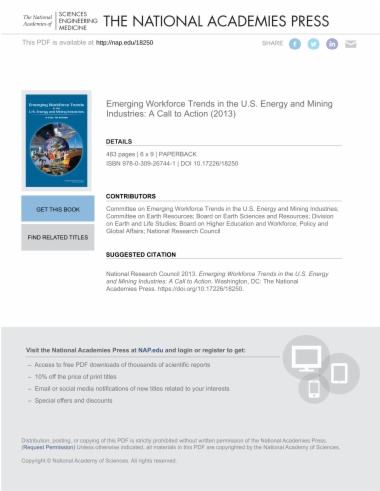

Energy and mineral resources are essential for the nation's fundamental functions, its economy, and security. Nonfuel minerals are essential for the existence and operations of products that are used by people every day and are provided by various sectors of the mining industry. Energy in the United States is provided from a variety of resources including fossil fuels, and renewable and nuclear energy, all with established commercial industry bases. The United States is the largest electric power producer in the world. The overall value added to the U.S. gross domestic product (GDP) in 2011 by major industries that consumed processed nonfuel mineral materials was $2.2 trillion.
Recognizing the importance of understanding the state of the energy and mining workforce in the United States to assure a trained and skilled workforce of sufficient size for the future, the Department of Energy's (DOE's) National Energy technology Laboratory (NETL) contracted with the National Research Council (NRC) to perform a study of the emerging workforce trends in the U.S. energy and mining industries. Emerging Workforce Trends in the U.S. Energy and Mining Industries: A Call to Action summarizes the findings of this study.